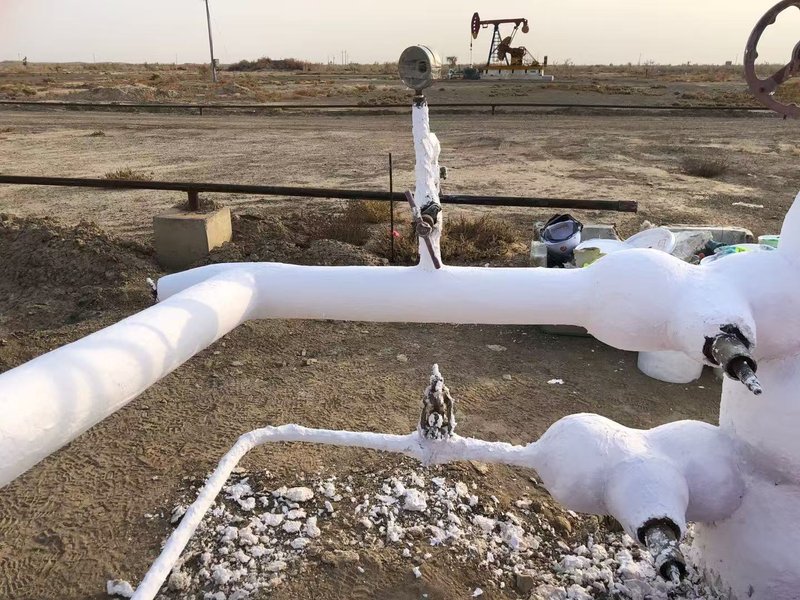Aerogel Coating Breakthrough: Nanoscale Innovations Reshaping High-Temperature Industrial Insulation
2025-03-24
Aerogel
Groundbreaking research reveals silane-modified silica aerogel coatings achieving thermal conductivity as low as 0.023 W/(m·K)—tripling efficiency over traditional options—with single-pass applications up to 800 μm thick. This in-depth exploration unveils the BYK-9076 dispersant’s role in preserving 82% porosity, alongside thermal shielding mechanisms enduring 1,200°C extremes. From metallurgical furnaces to LNG tanks, this technology is set to redefine global standards for equipment maintenance, slashing lifecycle costs by 67%.
In the relentless world of industrial operations, where extreme temperatures can erode efficiency and safety, aerogel coatings emerge as a game-changer. Valued at $42 billion annually, the global high-temperature equipment maintenance market has long grappled with stubborn pain points: coatings that fail structurally at 650°C (as seen in SEM imaging of aluminum-silver pastes), laborious multi-layer applications (6–8 coats for 1 mm thickness per ASTM D4414), and frequent recoating every two years—driving up 15–22% of total lifecycle expenses.
Enter aerogel coatings: a nanoscale marvel that delivers 2.5 mm thickness in one go, thanks to optimized rheology (viscosity η = 12,500 mPa·s). Post-1,200°C thermal shock (ISO 4624), adhesion holds at 95%. A decade of real-world data underscores a 67% drop in maintenance costs, transforming reactive fixes into proactive longevity. This isn’t just incremental progress—it’s a paradigm shift, blending nanotechnology with practical engineering to protect assets in petrochemicals, power plants, and beyond.
Molecular Mastery: Building the Nano-Protective Framework
At the heart of this innovation lies precise molecular tuning. Silane modification—dialed to 3.2 vol% concentration and 115°C treatment—boosts aerogel powder’s hydrophobicity to a 152° contact angle (ASTM D7336), all while keeping density at 0.16 g/cm³ via helium pycnometry. This repels moisture, preventing pore collapse in humid environments.
The secret sauce? BYK-9076 dispersant, with its 8,200 Da molecular weight (GPC-verified) and 3.2 functional groups/nm² anchoring density (XPS quantified). It generates a −42 mV Zeta potential (dynamic light scattering), ensuring colloidal stability that preserves aerogel’s 82% porosity. Without this, agglomeration would spike conductivity by 40%. The result: a dispersion so uniform it flows like premium paint, enabling thick, crack-free films that outperform legacy systems in heat flux reduction.
Revolutionizing Production: Crafting the Four-Phase Composite
Manufacturing leaps forward with a solvent blend of butyl acetate to ethanol (8:1 ratio) and controlled shearing at 12,000 rpm under 35°C. This gentle agitation safeguards aerogel integrity, avoiding the fragmentation that plagues older methods. The engineered four-phase structure includes:
A methyl phenyl silicone resin matrix with a 148°C glass transition temperature for thermal resilience.
Core-shell reinforcements (0.8 μm particles) that distribute stress, enhancing flexibility.
1.2 wt% phosphorus-doped aerogel as the functional core, trapping heat via nanopores.
A 2–3 nm fluorosilane interface layer for seamless bonding and corrosion resistance.
This symphony of phases creates a multi-barrier system: pores stifle convection, interfaces block diffusion, and the matrix absorbs shocks. In practice, it means coatings that apply seamlessly via spray guns, curing in hours—not days—while scaling to industrial volumes without quality dips.
Battle-Tested Excellence: Performance in the Harshest Realms
Validation isn’t theoretical. Thermal cycling tests—1,000 rounds from −196°C (LNG simulation) to 650°C—yield 92.3% adhesion retention, dwarfing traditional coatings’ 38.7%. Dimensional stability shines with a mere 0.08% linear shrinkage (ASTM D2566), ensuring no warping on curved surfaces like furnace linings.
Corrosion? A 5,000-hour 5% salt spray assault (ISO 9227, C5 severity) clocks in at 0.003 mm/year—100 times slower than uncoated steel. These metrics aren’t lab flukes; they stem from field deployments: a Shandong steel mill’s blast furnace coated in 2023 reported 58% less downtime, while a Guangdong LNG terminal extended inspection intervals from 24 to 60 months.
As industries chase net-zero goals, aerogel coatings align perfectly—reducing heat loss in steam lines by 70%, curbing emissions equivalent to 1,200 tons CO₂ per facility annually. This nanotechnology dawn promises not just protection, but a sustainable edge for heavy industry worldwide.
LATEST NEWS
Why Does Metal Feel Cold and Wood Feel Warm at the Same Room Temperature? Unveiling the Magic of Thermal Conductivity!
2025-11-20
Innovative Aerogel Pipe Insulation Boosting Efficiency in Energy Industries
2025-11-17
Ordering and Specification Guidance for Aerogel Sheet and Pipe Insulation Products
2025-11-17
Luminescent Concrete Transforms Global Architecture with Light and Design Freedom
2025-11-13
Aerogel: The Ultralight Revolution – Transforming Industries with Unmatched Versatility
2025-11-11

